
Charter Fishery Monitoring
Background
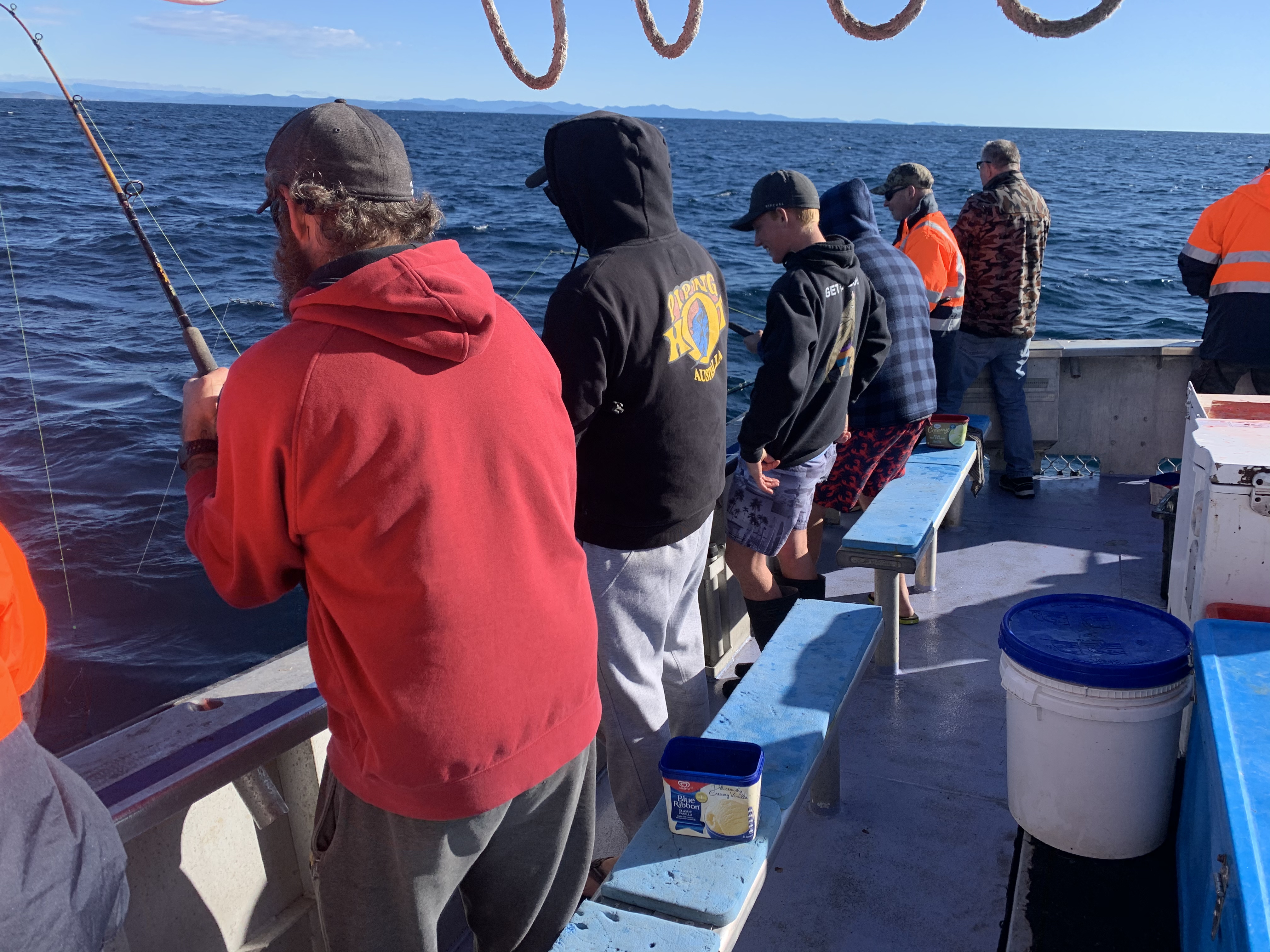
The NSW Charter Fishery is an important sector of the fisheries of NSW, involving hundreds of boats, catering to tens of thousands of anglers, with the potential to harvest large numbers of fish.
The NSW Charter Fishery is a licenced commercial operation that enables recreational fishing activities to occur and as such all catch from the fishery is regarded as recreational. Fishers on board charter boats must therefore abide by the same bag and size limit rules as all other NSW recreational fishers. These characteristics therefore provide an efficient platform for collecting data for use in monitoring and assessment of key recreational species caught in NSW waters.
How do we collect the information?
The Charter Fishery Monitoring component of the Recreational Fisheries Monitoring Program is comprised of 2 modules:
1) Logbook Monitoring
As part of their licence obligations, charter fishing operators are required to provide logbook records of all their fishing trips and the fish their clients retain. This information on catch and effort is used in monitoring the fishery and key species harvested by the fishery.
2) On-board Observer Program
Additional complementary data to monitor the fishery is provided by a state-wide on-board observer program for the nearshore marine charter fishery. This relies on trained scientific observers to collect additional information on species caught, fisher demographics, fleet fishing effort, locations fished, rates of discarding, interactions with protected species and biological data (size composition).
The primary aim of this observer program is to collect representative biological information to meet stock assessment needs for key species harvested by the fishery. Currently priority species for monitoring include Snapper, Bluespotted Flathead, Grey Morwong, Pearl Perch, Yellowtail Kingfish and Teraglin; however data is collected from all species of recreational importance caught during an observer trip.
The On-board Observer Program is run simultaneously with the biennial 12 month Recreational Fishing Research Surveys.
Results
1) Logbook Monitoring
In 2021/22, more than 80 charter boat businesses operated in the nearshore marine charter fishery completing over 3,300 fishing trips with almost 23,000 anglers. State-wide, the nearshore marine charter fishery recorded the capture of 128 different species of finfish and invertebrates; the ten finfish species retained overall were Snapper (21,400), Bluespotted Flathead (17,400), Grey Morwong (9,700), Yellowtail Scad (5,100), Blue Mackerel (5,000), Teraglin (4,400), Tiger Flathead (4,000), Redfish (2,400), Maori Wrasse (2,200) and Yellowtail Kingfish (2,000).
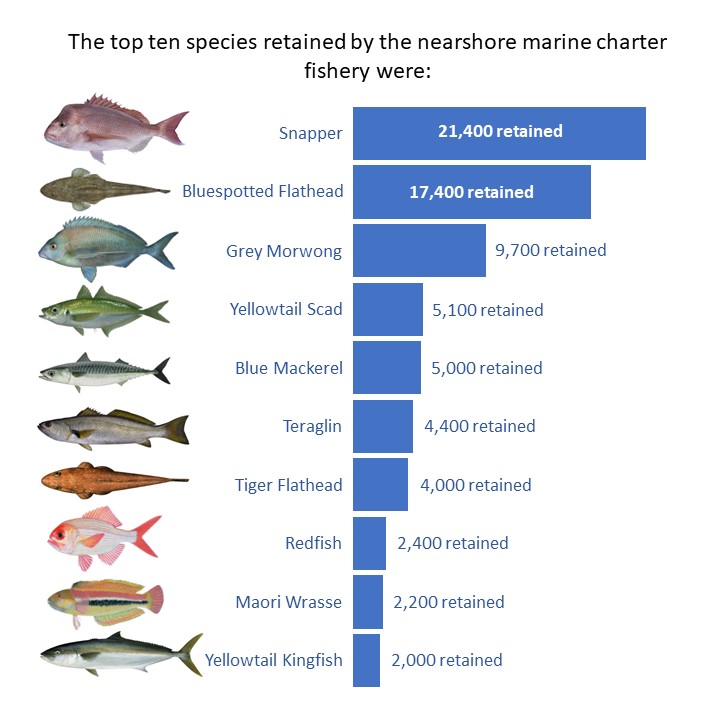
2) On-board Observer Program
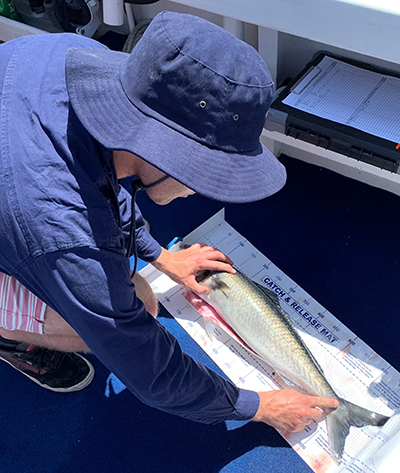
Almost 200 trips were sampled from more than 20 participating operators during the on-board observer program which operated between Ballina and Bermagui between November 2021 and February 2023. More than 1,400 charter clients were profiled by the program and over 12,000 fish were identified and measured. The main species recorded (by number) were Snapper (2,900), Bluespotted Flathead (1,700), Blue Mackerel (1,000), Yellowtail Scad (900) and Longspine Flathead (700). Overall, 44% of the landed catch was subsequently released. Over 4,000 individuals across 23 species of wildlife (mainly seabirds) were also recorded in the vicinity of charter vessels, but very few interactions with the fishery.
Length data recorded by observers for key species such as Bluespotted Flathead, Blue Mackerel, Yellowtail Scad, Snapper, Grey Morwong, Yellowtail Kingfish, Pearl Perch and Teraglin caught by the fishery provided size compositions which were used in the ongoing assessment and monitoring of these key recreational fish species in NSW waters.
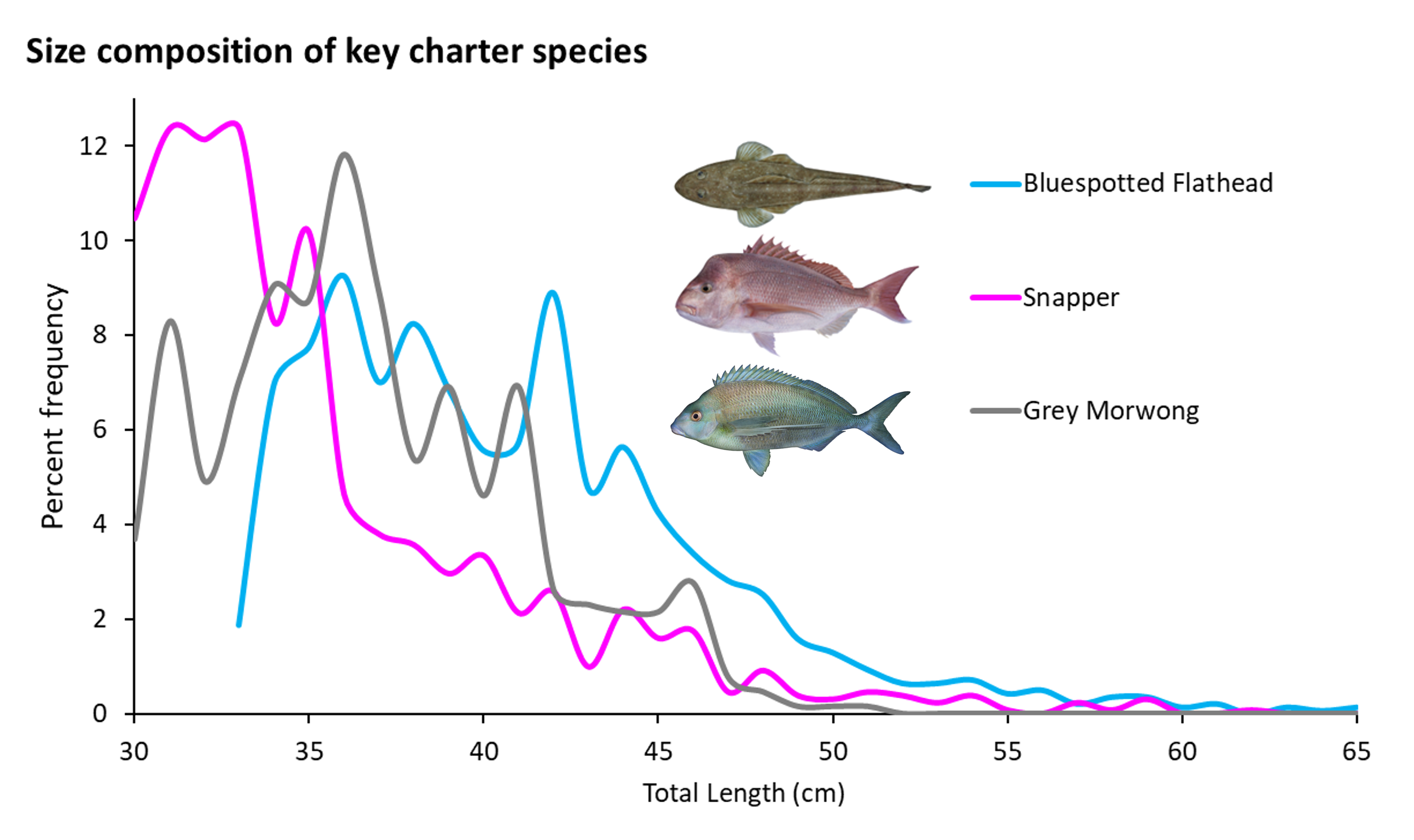
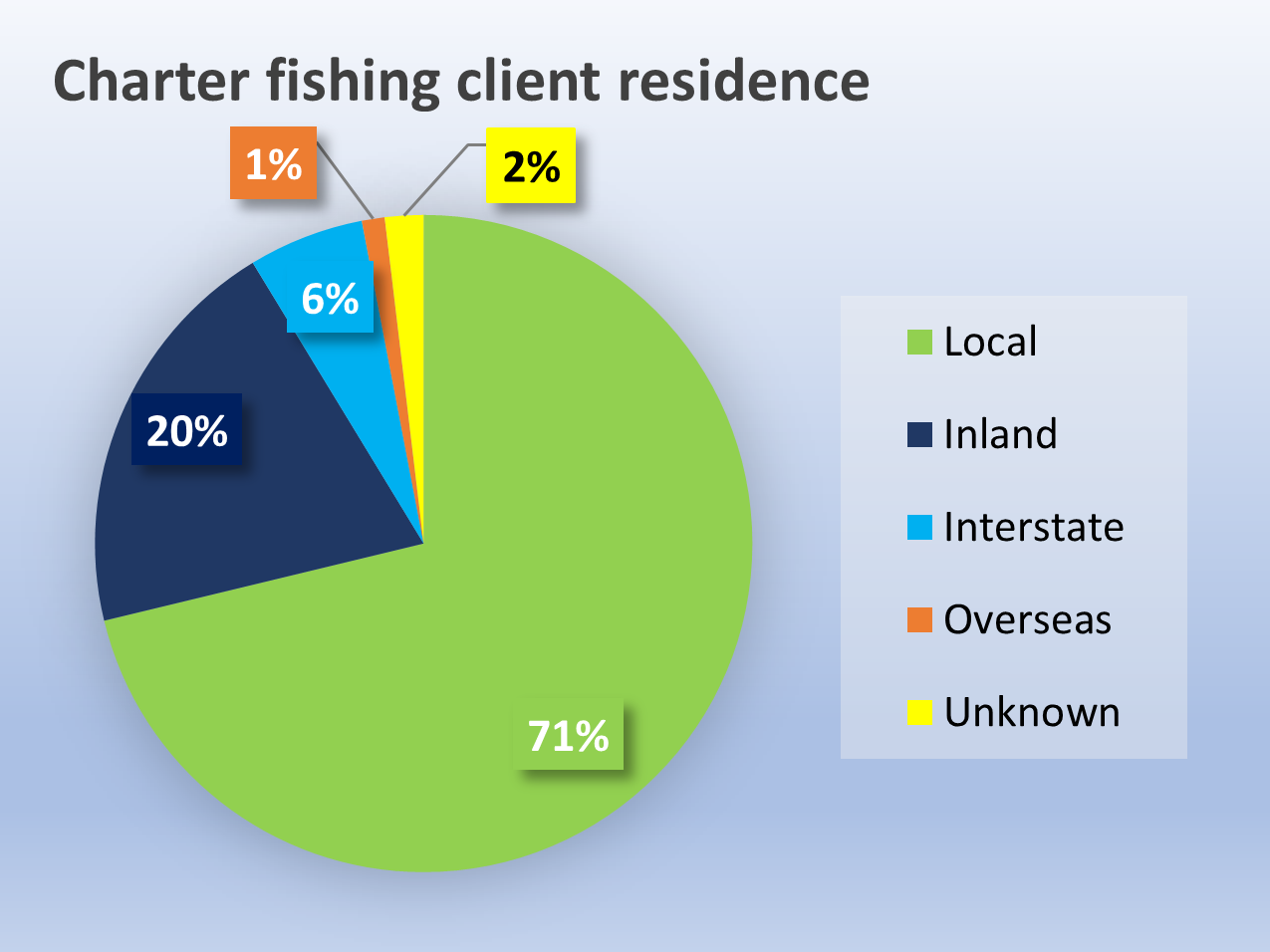 Demographic data collected by on-board observers also revealed that charter fishers were primarily male (~90%) with people of all ages utilizing the NSW Charter Fishery. On-board observer data also showed that 27% of charter clients came from inland regions of NSW, interstate or overseas, highlighting the value of the sector to local economies in terms of non-charter costs, such as travel, accommodation and food.
Demographic data collected by on-board observers also revealed that charter fishers were primarily male (~90%) with people of all ages utilizing the NSW Charter Fishery. On-board observer data also showed that 27% of charter clients came from inland regions of NSW, interstate or overseas, highlighting the value of the sector to local economies in terms of non-charter costs, such as travel, accommodation and food.
Report
The full report – "NSW Charter Fishery Monitoring 2021/22 – Key Results" can be found here (PDF, 2635.51 KB)
Past Reports
Past reports from previous charter monitoring surveys undertaken in NSW can be found here:

